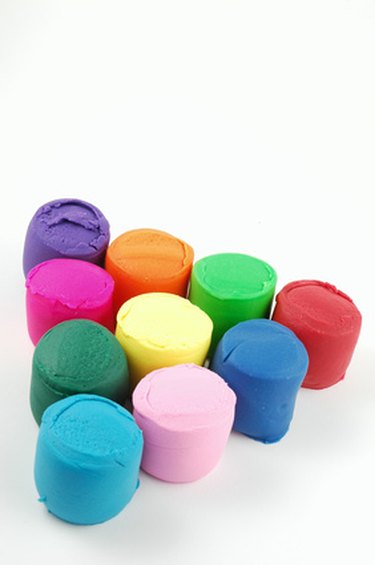Things You'll Need
3/4 c. white glue
1/2 c. water
1 tsp. glycerin
Saucepan
Wooden spoon
1 c. cornstarch
Acrylic or oil paint
Plastic container

Delicate craft projects are best made with cold porcelain clay because it is a soft and pliable material. Cold porcelain clay is not actual porcelain, but it looks similar to porcelain when dry, as it takes on a smooth, shiny texture. Cold porcelain can be made from scratch with at-home materials. You can even add a desired color to hue the clay before you store it or turn it into a delicate sculptural work of art.
Step 1
Mix 3/4 c. white glue, 1/2 c. water and 1 tsp. glycerin in an old saucepan over medium heat. Use a wooden spoon to mash up any clumps that form in the mix to create a creamy texture.
Video of the Day
Step 2
Add 1 c. cornstarch a little at a time. Continue stirring until the texture is hot and stiff from the cornstarch and the clay begins to take on a cottage cheese appearance.
Step 3
Wrap the cold porcelain clay in a dry dish towel to clump into one big ball.
Step 4
Wet another dish towel with cold water, and use it to cover a plate. Place the clay inside the damp towel, and begin to knead it with your fingers and palm until it is cool to the touch.
Step 5
Remove the dish towel, and continue to knead into a ball for 5 minutes or until it is smooth, elastic and no longer sticky. Apply a minimal amount of cornstarch to the ball if it sticks to your hands.
Step 6
Add a few drops of acrylic or oil paint to add color to the clay if you wish.
Step 7
Store the porcelain clay in a plastic airtight container for up to 3 days to keep it from drying out.
Tip
Keep cold porcelain clay wrapped tightly in cornstarched plastic wrap when setting the clay out to mold. This will keep the clay from drying out prematurely.
Video of the Day